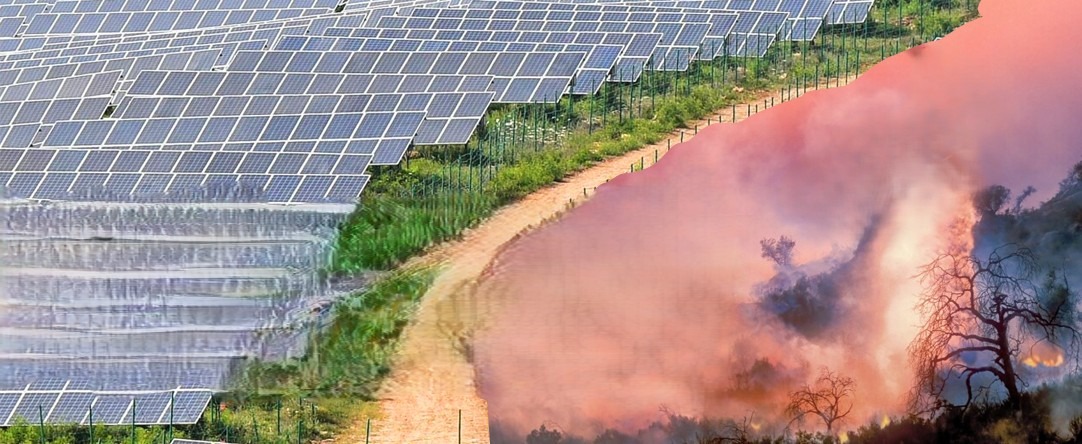When disasters strike — earthquakes, floods, cyclones, or wildfires — the first thing that often collapses is the power supply. Without electricity, communication, medical care, water pumping, and relief coordination become nearly impossible.
That’s where solar energy steps in as a lifesaving power source.
Portable, renewable, and independent of fuel supply chains, solar power systems can quickly restore electricity and support emergency operations in even the harshest conditions.
Why Electricity Is Critical in Disaster Relief:
After a disaster, electricity becomes the backbone for:
• Powering medical facilities and emergency shelters
• Running communication systems for rescue teams
• Charging phones, radios, and lighting
• Operating water pumps, sanitation, and refrigeration for medicines and food
Traditional diesel generators often fail due to:
• Fuel shortages
• Transportation blockages
• Maintenance issues
Solar systems, on the other hand, offer an independent and renewable alternative.
How Solar Energy Supports Disaster Response:
Solar power systems play multiple roles in relief and recovery operations:
1. Portable Solar Generators
These are small, plug-and-play units that can power:
• Lights, fans, and charging stations
• Communication devices and small medical equipment
They require no fuel and can be transported easily to remote or flooded areas.
2. Solar-Powered Medical Camps
During power outages, solar microgrids or solar-powered field hospitals can keep medical operations running 24/7.
They provide reliable power for:
• Oxygen concentrators
• Vaccine refrigeration
• Communication and lighting systems
3. Solar Water Purification Units
In disaster zones, clean water becomes scarce.
Solar-powered water purification systems use solar electricity to run UV filters or pumps, making contaminated water safe to drink.
4. Solar Lighting and Street Lamps
Temporary shelters and relief camps often face security and safety concerns at night.
Solar-powered street lights can operate independently for several days, improving safety without relying on grid power.
5. Solar for Communication Networks
Maintaining mobile connectivity is vital for coordination.
Solar panels help power telecom towers and base stations, keeping communication lines open when the main grid is down.
Case Studies: Solar in Real-World Disaster Relief
a. Philippines – Typhoon Haiyan (2013)
After one of the strongest typhoons ever recorded, the Philippines deployed solar microgrids and portable solar kits to provide electricity for hospitals and shelters when diesel supplies ran out.
b. Kerala, India – Floods (2018)
During the devastating floods, solar-powered charging stations and lighting systems supported rescue teams in remote areas where grid electricity was unavailable.
c. California, USA – Wildfires (2020)
Solar trailers and microgrids powered evacuation centers, providing backup power when grid lines were destroyed by fire.
Benefits of Using Solar Energy in Disaster Relief:
| Advantage | Explanation |
| Fuel Independence | No need to transport fuel or rely on disrupted supply chains. |
| Quick Deployment | Portable solar systems can be installed and activated within hours. |
| Clean and Silent Operation | No harmful emissions or noise — ideal for medical and residential use. |
| Low Maintenance | Once installed, solar systems require minimal upkeep. |
| Scalable | Can power small shelters or large community relief camps. |
Solar Energy for Long-Term Recovery:
After initial relief, solar systems continue to serve as sustainable energy solutions during rebuilding efforts.
Communities can:
• Install solar microgrids for local power generation
• Use solar water heaters and pumps for daily use
• Deploy solar-powered schools and clinics for long-term recovery
This transition not only rebuilds communities faster but also makes them more resilient to future disasters.
Government and NGO Initiatives:
Several global and Indian agencies are adopting solar power for disaster relief:
• UNDP & IRENA promote renewable energy in humanitarian missions.
• SECI (Solar Energy Corporation of India) has funded solar microgrids in rural disaster-prone areas.
• NGOs like Selco Foundation provide solar kits to relief workers in flood-affected and remote zones.
Future of Solar in Disaster Management:
Emerging technologies are making solar energy even more effective for emergency response:
• Solar + Battery Hybrid Systems for 24-hour power backup
• Foldable solar panels for ultra-portable relief units
• AI-based energy management systems for optimizing power distribution
As the world faces more frequent climate-related disasters, solar energy will be at the heart of resilient infrastructure.
Conclusion:
In times of crisis, solar energy is more than just a green solution — it’s a lifeline.
From powering hospitals and shelters to purifying water and keeping communication alive, solar systems provide reliability when everything else fails.
For governments, NGOs, and communities, investing in solar infrastructure today ensures faster, cleaner, and more sustainable disaster response tomorrow.




